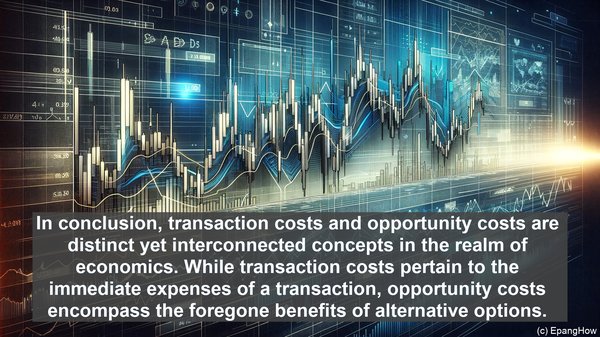Introduction: The World of Costs
Welcome to our article on transaction costs and opportunity costs. As we navigate the realm of economics, costs play a pivotal role. While both transaction costs and opportunity costs are integral to decision-making, they differ in their nature and implications. Let’s dive deeper into these concepts.

Transaction Costs: The Price of Exchange
Transaction costs encompass the expenses incurred during the process of buying or selling goods, services, or assets. They go beyond the actual price of the item and include various elements such as brokerage fees, legal expenses, and transportation costs. These costs are often explicit and can be easily quantified. For instance, when purchasing a house, the transaction costs may include the real estate agent’s commission, legal fees, and property taxes.

Opportunity Costs: The Value of Alternatives
On the other hand, opportunity costs refer to the benefits or value that is foregone when choosing one option over another. They are not monetary in nature but represent the potential gains from the next best alternative. Opportunity costs are implicit and can be more challenging to quantify. For example, if you decide to invest your money in stocks, the opportunity cost may be the potential returns you could have earned by investing in real estate or bonds.
Distinguishing Factors: Time and Tangibility
One key distinction between transaction costs and opportunity costs lies in their relationship with time. Transaction costs are immediate and occur at the time of the transaction. In contrast, opportunity costs are future-oriented, representing the long-term consequences of a decision. Additionally, while transaction costs are tangible and can be directly observed, opportunity costs are intangible and require a deeper analysis of the alternatives and their potential outcomes.
Decision-Making Implications
Understanding the difference between transaction costs and opportunity costs is crucial for effective decision-making. When evaluating a choice, considering both the explicit transaction costs and the implicit opportunity costs is essential. Focusing solely on transaction costs may lead to overlooking the potential gains of alternative options, while disregarding transaction costs entirely can result in financial inefficiencies. Striking a balance between the two is key.
